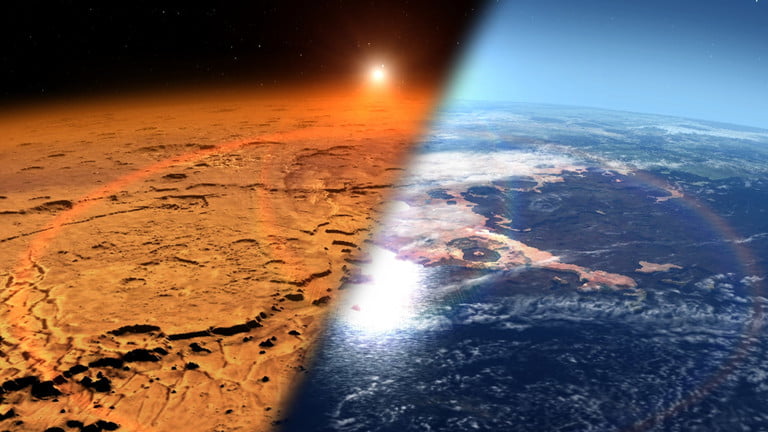
Today Mars is a cold, arid desert. But billions of years ago, it could have been a lush planet covered in surface water, not so different from Earth. The big difference between then and now is the Martian atmosphere, which is now thin and spare but was once thick enough to retain heat. This trapped heat allowed water to be liquid on the surface of the planet, which is key for the possibility of life existing there.
Scientists want to know more about Mars’ ancient atmosphere, both about its composition and the way it fostered the environment on the planet and about how long it persisted. One way to study this question is by estimating the thickness of the ancient atmosphere by looking at the presence of oxygen isotopes. Isotopes are versions of an atom, in this case, oxygen, which has a different mass than usual due to having a different number of neutrons. If an isotope is heavier, it is more likely to stay in a planet’s atmosphere. Lighter isotopes are more likely to be lost into space.
When compared to Earth, Mars has more of a heavier isotope, 18O, in proportion to a lighter isotope, 16O. The scientists could use this information to estimate how fast the atmosphere of Mars would have escaped. However, the ratio between these two isotopes is not stable over time. A new study can explain this as the ratio changes throughout the Martian day.
“Previous measurements on Mars or from Earth have obtained a variety of different values for the isotope ratio,” lead author Timothy Livengood explained in a statement. “Ours are the first measurements to use a single method in a way that shows the ratio actually varying within a single day, rather than comparisons between independent devices. In our measurements, the isotope ratio varies from being about 9% depleted in heavy isotopes at noon on Mars to being about 8% enriched in heavy isotopes by about 1:30 p.m. compared to the isotope ratios that are normal for Earth oxygen.”
This helps to explain previous measurements of the Martian atmosphere which appeared to be contradictory. That’s good news for scientists, as it means that the models we have of how Mars’ atmosphere developed over time are probably correct.
“It shows that the atmospheric loss was by processes that we more or less understand,” Livengood said. “Critical details remain to be worked out, but it means that we don’t need to invoke exotic processes that could have resulted in removing CO2 without changing the isotope ratios, or changing just some ratios in other elements.”


























